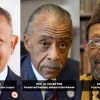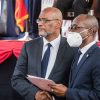
On May 13, 1985, a fire started after Philadelphia police dropped an explosive on a building where members of the MOVE organization where hiding.
On May 13, 1985, police in Philadelphia—Pennsylvania’s largest city—dropped a powerful bomb containing military C4 explosives on a house occupied by six children and seven adults.
That aerial assault 30 years ago is one of the worst incidents of police brutality in modern America.
The bomb, dropped from a state police helicopter, sparked a fire.
Philadelphia’s then-Police Commissioner Gregore Sambor, along with then-Fire Commissioner William Richmond, barred firefighters from battling that blaze, pursuing a bizarre strategy to use the fire as a tactical weapon to drive the occupants from their barricaded house. Police had sought to arrest four adults inside the building on seven charges ranging from disorderly conduct to possession of explosives.
That decision to “let the fire burn” allowed the blaze to roar into a firestorm.
The inferno incinerated 11 inside the bombed building, including five children ages 7 to 13. That inferno also destroyed 60 other homes in the West Philadelphia neighborhood, leaving 250 people homeless. All of those killed in that inferno ignited by police were black, as were those left homeless by the inferno’s destruction.
Today many Philadelphia residents, particularly those under 30 years old, are unaware of that history-staining 1985 police attack on members of MOVE, an anti-establishment group founded in 1972. Authorities deemed MOVE a radical organization. The 11 people incinerated were MOVE members, including the organization’s founder, John Africa.
An Overlooked Atrocity
Incredibly, an aerial bombing of an American city by police rarely makes the lists of worst police-abuse incidents, despite its gruesome death toll and extensive destruction.
Many “worst lists” include the 1991 shooting of Amadou Diallo, who died during a 41-bullet fusillade from New York City police officers. Yet during the assault on May 13 that began at 5:50 a.m., Philadelphia police fired thousands of bullets into the MOVE house using a range of firearms, including machine guns. The confrontation went on until police dropped the bomb at 5:27 p.m.
The infamous 1985 bombing is far from an isolated incident in a dim past. The failure to hold Philadelphia authorities accountable for that deadly, destructive episode contributed to the impunity that drives the persistence of police brutality—brutality that has triggered massive protests across America since last year, after prosecutors in St. Louis and New York City manipulated grand juries away from indictments against the police officers responsible for the deaths of Michael Brown and Eric Garner.
In America, prosecutors control the grand jury process without input from judges and other lawyers. Legal experts repeatedly criticize the failure of local prosecutors to charge police even when evidence documents indictable offenses. A 1991 article in the American Bar Association Journal criticized the “unwritten code” that prosecutors will not bring charges against police.














